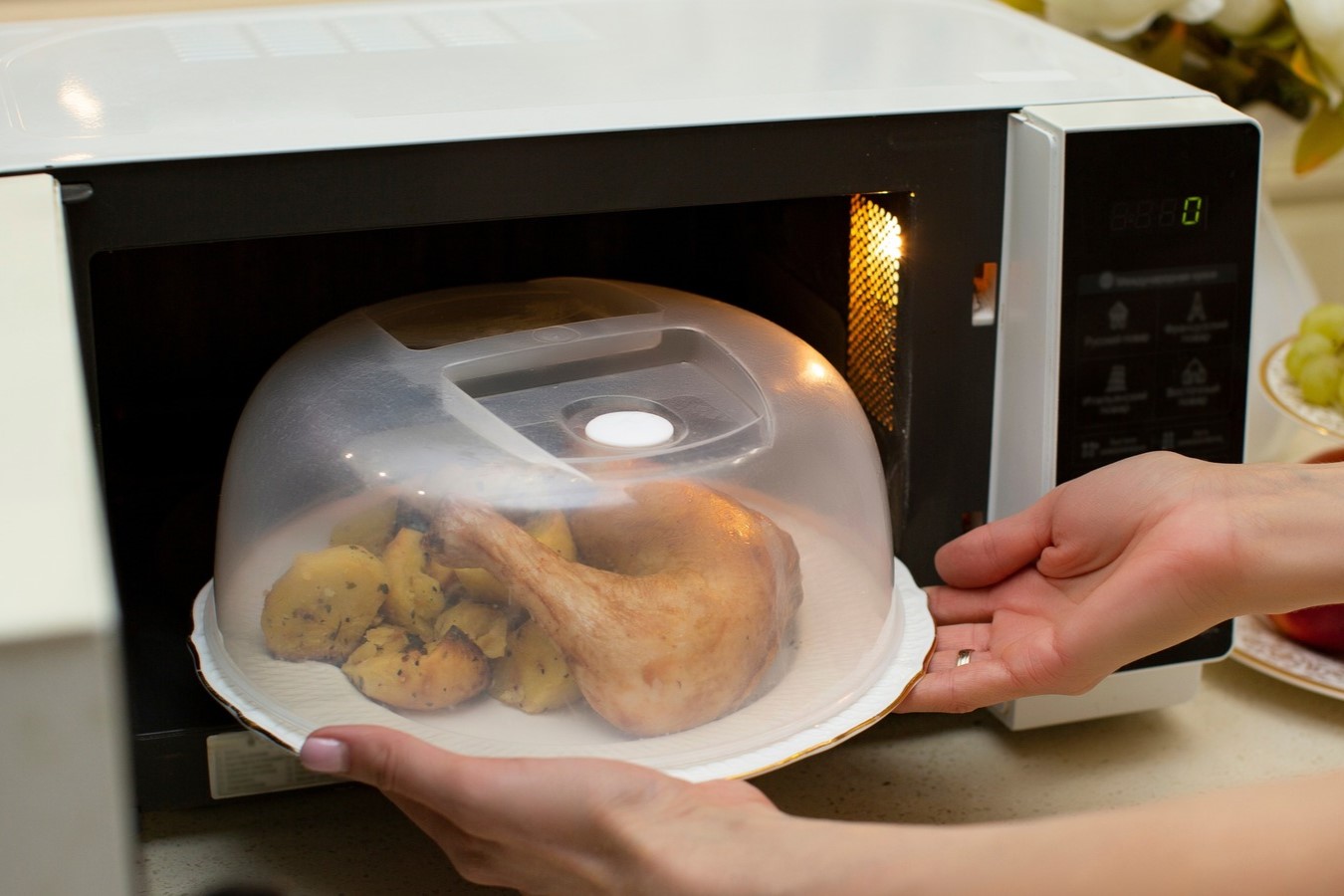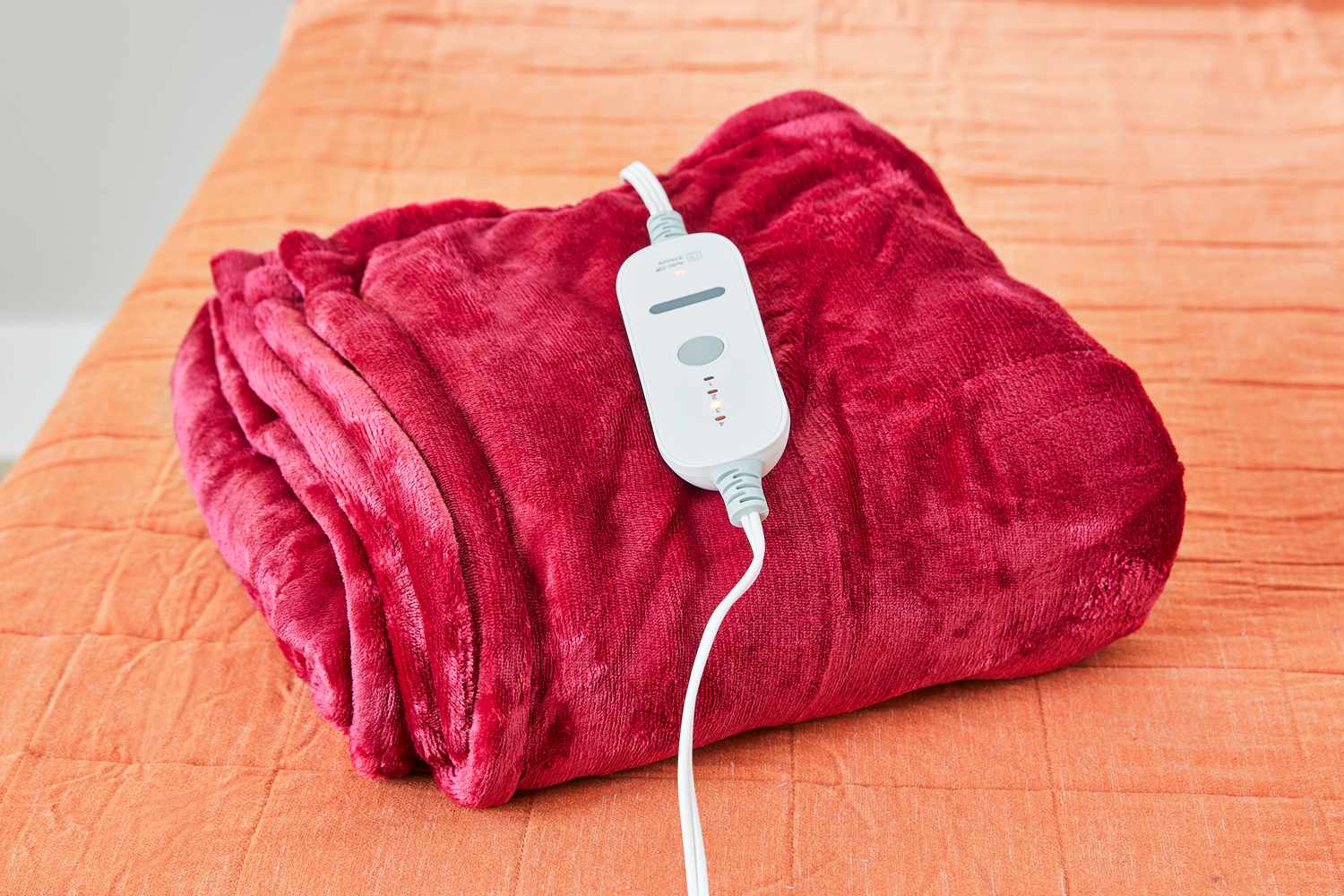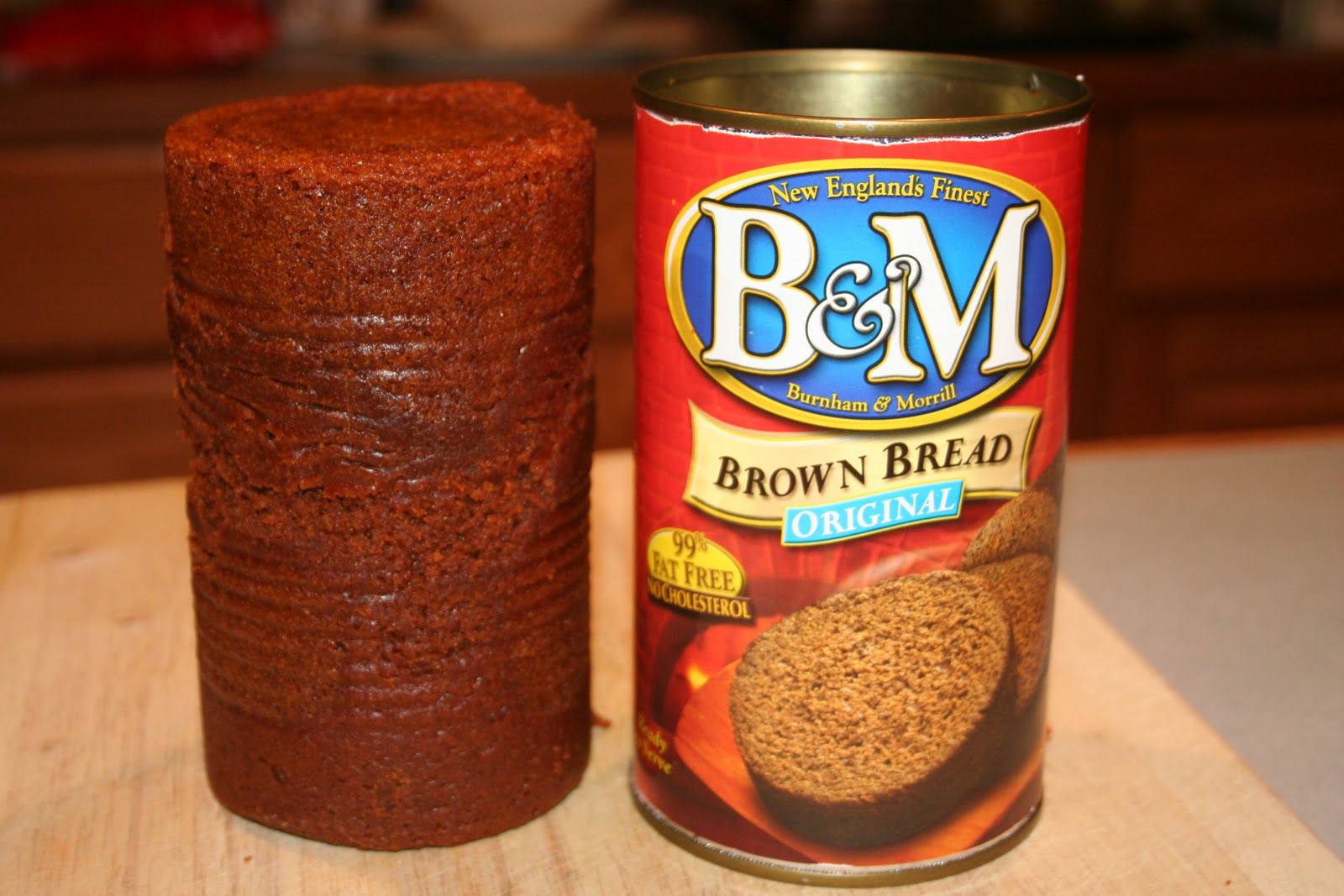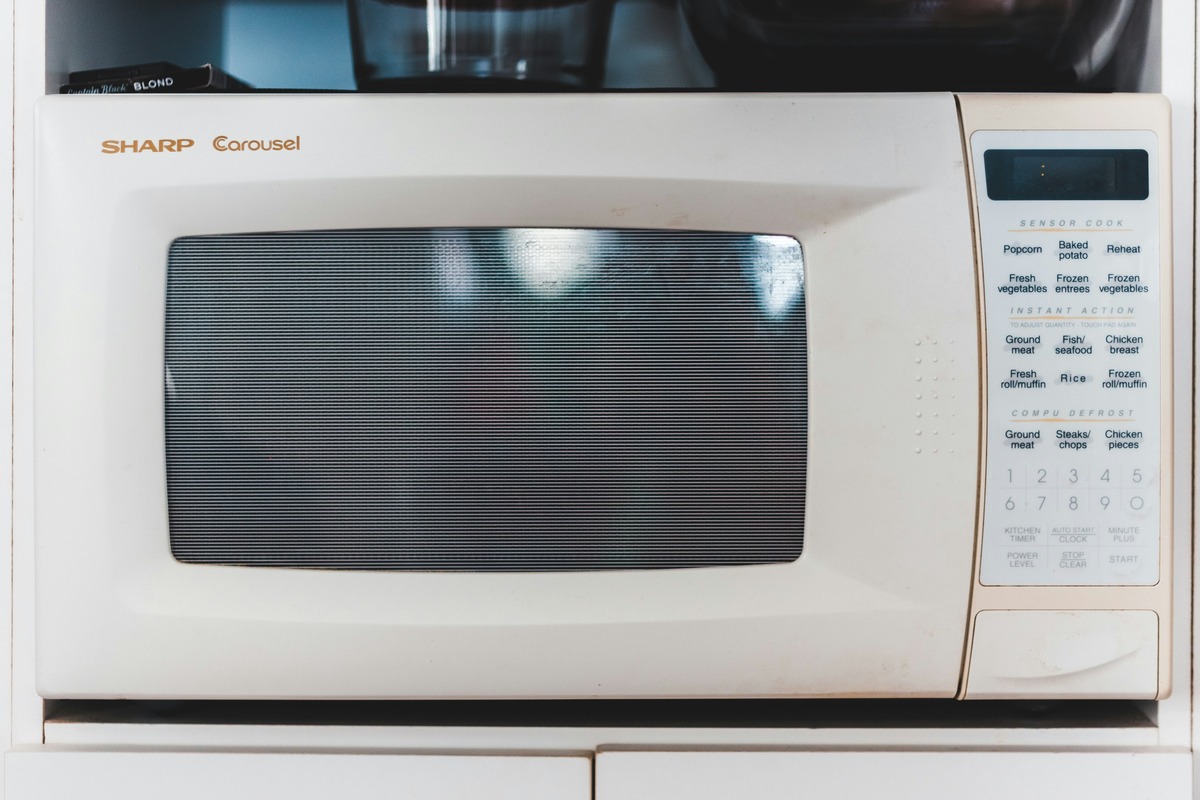Home>Food and Cooking>Is Your Microwave Failing To Heat Food? Discover The Surprising Reason Behind It!


Food and Cooking
Is Your Microwave Failing To Heat Food? Discover The Surprising Reason Behind It!
Published: February 6, 2024
Discover the surprising reason why your microwave is failing to heat food. Get expert tips and solutions for food and cooking issues.
(Many of the links in this article redirect to a specific reviewed product. Your purchase of these products through affiliate links helps to generate commission for Noodls.com, at no extra cost. Learn more)
Table of Contents
Introduction
Microwaves have become an indispensable appliance in modern kitchens, revolutionizing the way we prepare and reheat food. However, have you ever experienced the frustration of placing your meal in the microwave, only to find that it remains disappointingly cold after the timer has elapsed? This common occurrence can leave you puzzled and craving a hot meal. In this comprehensive guide, we will delve into the inner workings of microwaves, explore the typical reasons for their failure, and uncover a surprising explanation for why your microwave might not be heating food as expected. Additionally, we will provide practical tips for troubleshooting and potentially resolving this issue, allowing you to enjoy piping hot meals once again.
Let's embark on a fascinating journey to uncover the mysteries behind microwave malfunctions and discover the unexpected culprit that may be hindering your culinary endeavors. Whether you are a seasoned cook or a busy professional seeking quick and convenient meal solutions, understanding the intricacies of microwave functionality is essential for maintaining a well-functioning kitchen. So, let's roll up our sleeves and delve into the fascinating world of microwaves to unravel the mystery behind their occasional reluctance to heat our favorite dishes.
Understanding How Microwaves Work
Microwaves operate on the principle of electromagnetic radiation, utilizing a form of energy that oscillates at a specific frequency. Within the microwave oven, an electronic device called a magnetron generates microwaves, which are then distributed throughout the cooking chamber. These microwaves consist of electric and magnetic fields that interact with the water, fat, and sugar molecules present in the food, causing them to vibrate at an incredibly high frequency. This agitation generates heat, thereby cooking or reheating the food.
The microwaves' ability to penetrate the food and cause the molecules to vibrate rapidly is what distinguishes them from conventional cooking methods. Unlike traditional ovens, which rely on conduction and convection to transfer heat to the food, microwaves directly excite the molecules within the food, resulting in rapid and efficient heating.
It's essential to note that while microwaves can effectively heat food, they do so unevenly at times. This is due to the varying composition and density of different foods, which can affect the way they interact with microwaves. However, the turntable found in most microwave ovens helps to mitigate this issue by rotating the food, ensuring more uniform exposure to the microwaves.
Understanding the fundamental principles of microwave operation provides insight into why certain foods may heat more quickly or slowly in a microwave. Additionally, this knowledge is invaluable when troubleshooting potential issues with microwave performance, as it allows for a deeper understanding of the appliance's inner workings.
By comprehending the intricate process through which microwaves interact with food on a molecular level, we gain a newfound appreciation for the remarkable efficiency and convenience that these appliances offer. This understanding serves as a foundation for exploring the potential reasons behind a malfunctioning microwave and discovering innovative solutions to restore its optimal functionality.
Common Reasons for Microwave Failure
-
Door Interlock Switches: The door interlock system is a crucial safety feature in microwaves. If the door interlock switches become faulty or misaligned, the microwave may not start or heat food. This is a common issue that can arise from regular wear and tear or accidental damage to the door mechanism.
-
Faulty Magnetron: As the heart of the microwave, the magnetron is responsible for generating the microwaves that heat the food. Over time, the magnetron can deteriorate or fail, leading to a lack of heating in the microwave. This component is vital to the appliance's functionality, and its failure can result in the inability to cook or warm food effectively.
-
Defective High Voltage Diode: The high voltage diode plays a crucial role in converting the high voltage power from the capacitor to the magnetron. If the diode malfunctions, it can disrupt the flow of electricity to the magnetron, causing the microwave to fail in heating food.
-
Faulty Capacitor: The capacitor stores electricity to power the magnetron. When the capacitor is defective, it can hinder the magnetron's ability to receive the necessary power, leading to a lack of heating in the microwave.
-
Burnt-out or Faulty Thermal Fuse: The thermal fuse acts as a safety device, cutting off the microwave's power if it detects overheating. If the thermal fuse is burnt out or faulty, it can prevent the microwave from heating food, as it may interrupt the power supply to the magnetron.
-
Malfunctioning Control Board: The control board, or electronic control board, governs the microwave's various functions and settings. If this component malfunctions, it can disrupt the heating process, leading to an unresponsive or non-heating microwave.
-
Issues with Turntable and Roller Guide: The turntable and roller guide aid in distributing the microwaves evenly throughout the cooking chamber. If these components are damaged or misaligned, they can hinder the microwave's ability to heat food uniformly, resulting in cold spots and uneven heating.
Understanding these common reasons for microwave failure is essential for identifying and addressing potential issues with the appliance. By recognizing these key failure points, users can take proactive measures to troubleshoot and rectify microwave malfunctions, ensuring that their culinary experiences remain uninterrupted and enjoyable.
The Surprising Reason Your Microwave Might Not Be Heating Food
Amidst the array of potential causes for a malfunctioning microwave, one often overlooked factor can significantly impact the appliance's ability to heat food: the humble and easily disregarded carousel or turntable. This seemingly innocuous component, designed to rotate food during the heating process, plays a pivotal role in ensuring uniform and efficient heating within the microwave oven.
The turntable serves as a crucial facilitator of heat distribution, working in tandem with the microwave's internal mechanisms to promote consistent exposure of the food to the emitted microwaves. By rotating the food, the turntable helps to mitigate the formation of cold spots and promotes even heating throughout the dish. However, if the turntable ceases to function as intended, it can disrupt this delicate balance, leading to subpar heating performance and leaving meals inadequately warmed.
Several issues can compromise the functionality of the turntable, including misalignment, mechanical obstructions, or motor failure. Misalignment, often resulting from accidental displacement or improper cleaning practices, can impede the turntable's rotation, diminishing its capacity to evenly distribute the microwave's energy. Similarly, mechanical obstructions such as debris or food particles can hinder the turntable's movement, disrupting the uniformity of the heating process. Additionally, motor failure, stemming from wear and tear or electrical issues, can render the turntable immobile, further exacerbating the microwave's heating inefficiency.
The surprising revelation that the turntable, a seemingly inconspicuous component, can profoundly influence the microwave's heating capabilities underscores the interconnected nature of the appliance's internal mechanisms. By addressing and rectifying issues related to the turntable, users can potentially restore their microwave's optimal functionality, reclaiming the convenience and efficiency that this indispensable kitchen appliance offers.
As we unravel the enigma of microwave malfunctions, it becomes evident that the unassuming turntable holds a pivotal role in preserving the appliance's performance. By acknowledging the impact of this often overlooked component, users can embark on a journey of troubleshooting and maintenance, ensuring that their microwave continues to deliver satisfying, evenly heated meals for years to come.
How to Troubleshoot and Fix Your Microwave
When faced with a malfunctioning microwave, it's essential to approach the troubleshooting process systematically to identify and address potential issues effectively. Here's a step-by-step guide to help you diagnose and potentially resolve common problems with your microwave:
-
Inspect the Turntable and Roller Guide: Begin by examining the turntable and roller guide for any signs of misalignment, obstruction, or damage. Ensure that the turntable can rotate freely and that the roller guide is positioned correctly. Clean the turntable and its support to remove any debris that may be impeding its movement.
-
Check the Door and Interlock System: Verify that the microwave door closes securely and engages the interlock system properly. If the door does not close tightly or if the interlock system appears faulty, it may impede the microwave's operation. Address any issues with the door mechanism to ensure proper functionality.
-
Test the High Voltage Diode and Capacitor: If the microwave is still not heating, consider testing the high voltage diode and capacitor using a multimeter. A faulty diode or capacitor can disrupt the flow of power to the magnetron, leading to heating issues. Consult the appliance's manual or seek professional assistance for safe testing procedures.
-
Inspect the Magnetron and Thermal Fuse: Examine the magnetron for signs of damage or wear. A malfunctioning magnetron can result in inadequate heating. Additionally, check the thermal fuse for continuity to determine if it is functioning correctly. Replace the magnetron or thermal fuse if necessary.
-
Evaluate the Control Board and Power Supply: If the microwave remains unresponsive, inspect the control board for any visible damage or burnt components. Test the power supply to ensure that the microwave is receiving the necessary electrical input. Address any issues with the control board or power supply to restore proper functionality.
-
Seek Professional Assistance if Necessary: If you encounter complex technical issues or are unsure about performing diagnostic tests and repairs, it's advisable to seek professional help. Certified technicians can conduct thorough assessments and implement precise repairs to ensure the safe and effective restoration of your microwave.
By following these troubleshooting steps, you can gain valuable insights into the potential causes of your microwave's malfunction and take proactive measures to address the identified issues. Whether it's rectifying problems related to the turntable, door interlock system, electronic components, or power supply, a systematic approach to troubleshooting can pave the way for a successful resolution, allowing you to enjoy the convenience of a fully functional microwave in your kitchen.
Conclusion
In conclusion, the malfunction of a microwave, particularly its failure to heat food, can stem from a myriad of technical issues, ranging from faulty components to disrupted mechanisms. While common culprits such as defective magnetrons and high voltage diodes are frequently scrutinized during troubleshooting, the often overlooked turntable emerges as a surprising yet influential factor in the appliance's heating performance.
The revelation of the turntable's pivotal role in ensuring uniform heat distribution underscores the interconnected nature of microwave functionality. Its ability to rotate food during the heating process promotes consistent exposure to the emitted microwaves, mitigating the formation of cold spots and facilitating even heating. When the turntable encounters issues such as misalignment, mechanical obstructions, or motor failure, the microwave's heating efficiency is compromised, leading to inadequate warming of meals.
By understanding the significance of the turntable and adopting a systematic approach to troubleshooting, users can potentially rectify microwave malfunctions and restore optimal functionality to their appliances. Inspecting the turntable, evaluating the door interlock system, testing electronic components, and seeking professional assistance when necessary are essential steps in diagnosing and addressing microwave issues effectively.
Ultimately, the journey to uncover the surprising reason behind a non-heating microwave unveils the intricate interplay of its internal mechanisms and the critical role of often disregarded components. Armed with this newfound knowledge, users can embark on a proactive path of maintenance and troubleshooting, ensuring that their microwave continues to deliver efficiently heated meals, enriching their culinary experiences for years to come.














